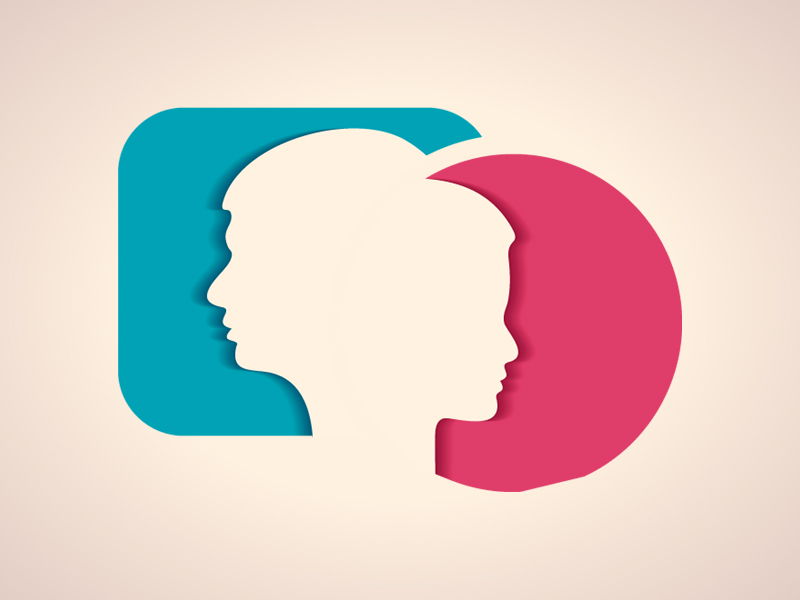
Patients with sexual ambiguity struggle with the trauma of not knowing their identity
Expecting a newborn is one of the most anticipated moments in any couple’s life. It was not any different for Shan and Maimoona* who spent the entire pregnancy preparing for every tiny detail so things would go smoothly once the little one arrives. While they welcomed the idea of having a son or a daughter equally, like most parents, they were eager to know which one it would be.
What the couple, however, was not prepared for was Disorder of Sex Development (DSD) — a rare condition where a child is born as neither a male nor female. “We were so ashamed,” admits Shan, “and we were afraid whether our community would accept our child as one of them.” The baby was delivered by a midwife in a village near Muzaffarabad, where both the parents worked as domestic staff. Not knowing what to do, they decided to name their baby Danish and raised him as a boy based on the physical appearance. Things seemed well until Danish hit puberty and started showing signs of a female anatomy. The troubled parents decided to seek help from their employer, who adviced them to take medical help from Shifa International Hospital in Islamabad, where Danish was diagnosed with Congenital Adrenal Hyperplasia (CAH) — a type of DSD.

It’s not a disease
According to Mayo Clinic Organisation (MCO), sexual ambiguity has various causes which differ for both male and female genitalia. It is crucial to understand that this is not a disease but a condition that affects sexual development.
In scientific terms, a baby’s genetic sex is established at conception. The mother’s egg contains the X chromosome while the father’s sperm contains either the X or the Y chromosome. A baby who inherits the X chromosome from the father is a genetic female while a baby who inherits the Y chromosome is a genetic male. A disruption of the steps can result in a mismatch between the external genitals and the internal sex organs or the chromosomal sex (XX or XY). Thus, if there is a lack or deficiency of male hormones in a genetic male foetus it can cause the baby to have ambiguous genitalia, while exposure to male hormones during developments in a genetic female can also lead to the same condition.
CAH, the condition that Danish is suffering from is defined by MCO as a condition associated with an increase in the level of male sex hormones. According to, Dr Muhammad Afzal Sheikh, a pediatric surgeon who runs the Lahore Cleft Centre, CAH can be a life-threatening condition in some cases, if not treated immediately. “It may lead to acute adrenal crisis and in some children may cause hypertension. The patient is usually a female child and the defect lies at enzymatic level due to a genetic deficiency.” Although the abnormal genitalia can be seen only after birth, the diagnosis for this condition can be made prenatally as well.
Dealing with the unknown
Lack of awareness plays a huge part in perpetuating the stigma associated with DSD patients and also gives rise to a lot of myths relating to the issue. “Parents of CAH affected children believe that the child will not be able to give birth after the gender change,” explains Sheikh. “When, in fact, they have normal internal female organs and shall have normal fertility after surgery and treatment.” Another common mistake is to confuse a patient suffering from DSD with being a homosexual or a transgender. Most patients of DSD think of themselves as being either male or female as opposed to a transgender — who feels that he or she are trapped in the wrong body (i.e. a person with male anatomy wishes to be a woman).
In Danish’s case, an extensive treatment plan has been devised to deal with his CAH which consists of crisis management, maintenance of body steroid levels and then continuous monitoring of those steroid levels. “Along with medical treatment for correcting underlying deficiencies and providing symptomatic relief, reconstructive surgical procedures have been successful in providing physical and emotional relief to the patients and their families,” says Sheikh. The final step is a gender-change surgery, which is advised universally for all CAH patients who are of the same age as Danish is.
Shan and Maimoona are already worried about how Danish will adjust to his new lifestyle and if he will accept the gender change. “Our doctors have recommended a psychologist to help Danish with the transition,” says Shan.

Danish’s case might be rare, but it would be foolish to turn a blind eye to such patients. According to the Pakistan Journal of Medical Sciences, 61 patients were diagnosed with the same condition in 2011. The sooner we accept that such conditions exist, the better chances we will have of saving hundreds of children from a life of confusion and shame.
*Names have been changed to protect privacy.
The social stigma
For patients with DSD, facing society can be a lot more painful than their condition. According to Management of children with DSD: A retrospective analysis — a study carried out by a team of Pakistani doctors — children with sexual ambiguity are often diagnosed as late as puberty. The report attributes this late diagnosis to ‘a lack of awareness, poverty and a tendency of hiding sexual issues’. However the biggest issue the report states are the ‘cultural taboos considering genital ambiguity a social stigma’.
DSD patients and their families are subjected to immense scrutiny and discrimination, beginning at the child’s birth. Hence, a baby born with sexual ambiguity is usually hidden away by the family due to fear of shame, scorn or pity. “You have no idea how tough it is to deal with the snide comments passed by people, especially for the child,” says Maimoona. People’s comments are not usually limited to the child, but even the mother is often blamed for the condition, she adds.
Meanwhile, dealing with the condition as late as puberty also leads to many serious psychological problems, according to Sheikh. “The child [who] is brought up as a male or female according to their appearance can find it very difficult to adjust to a different gender so late in life,” he says referring to patients who opt for a gender change surgery later on. “A few patients have also refused conversion based on both age and social pressures,” adds Shiekh.
The lack of medical expertise about DSD in the country is also a huge obstacle in tackling the condition. At the International DSD Symposium in Glasgow 2013, Dr Syed Jamal Raza from the National Institute of Chile Health described the facilities for DSD care in Pakistan as “scarce and non-existent.” “Various concerns and constraints have been identified during our 15 year experience of treating DSD patients,” summarises Raza. “These range from religious, cultural, social, and financial to limited facilities available for investigations and treatment.” According to the report, Pakistan has only three pediatric endocrinologist and 20 adult endocrinologists at the moment.
Published in The Express Tribune, Ms T, September 7th, 2014.













































COMMENTS
Comments are moderated and generally will be posted if they are on-topic and not abusive.
For more information, please see our Comments FAQ